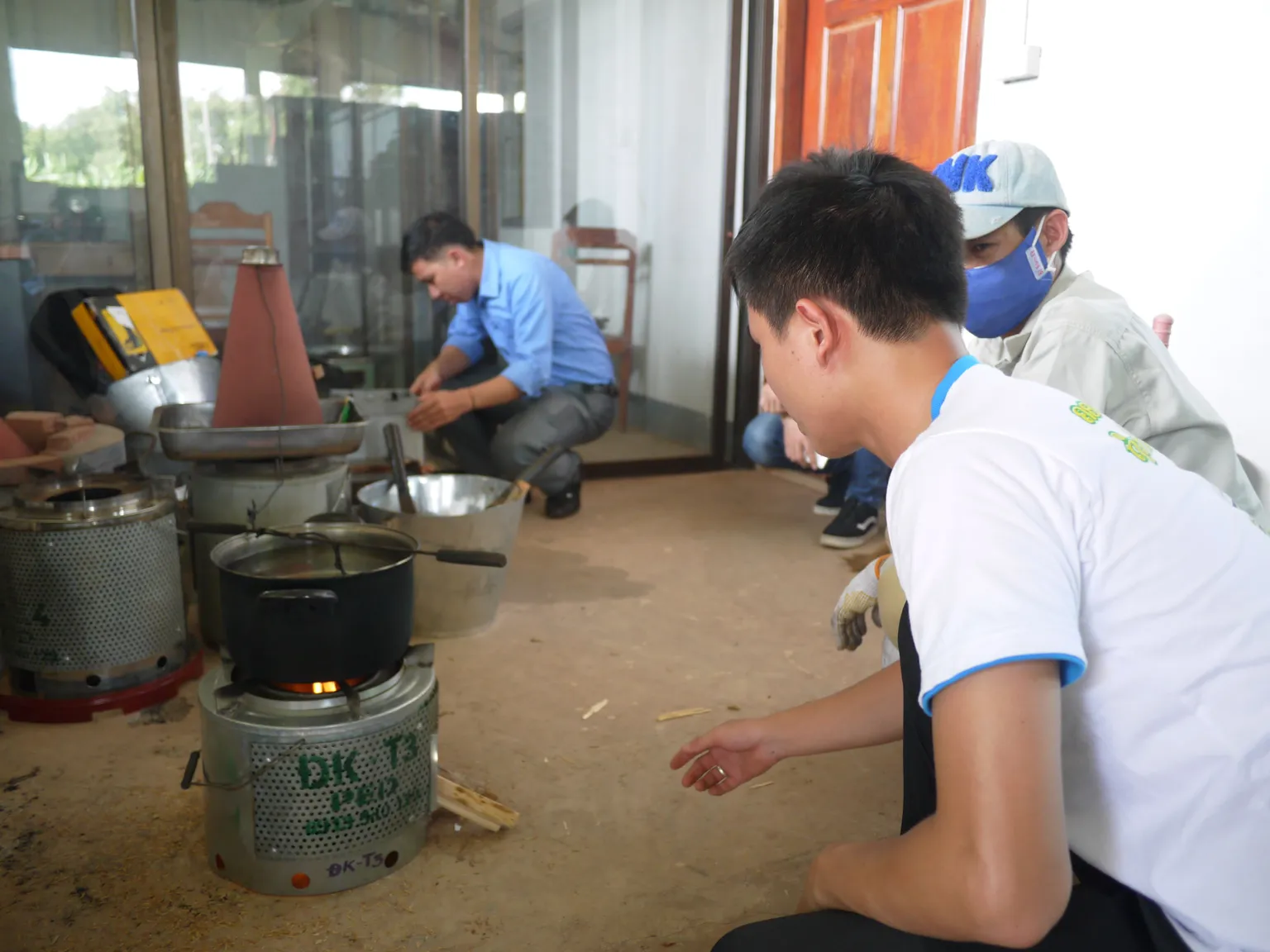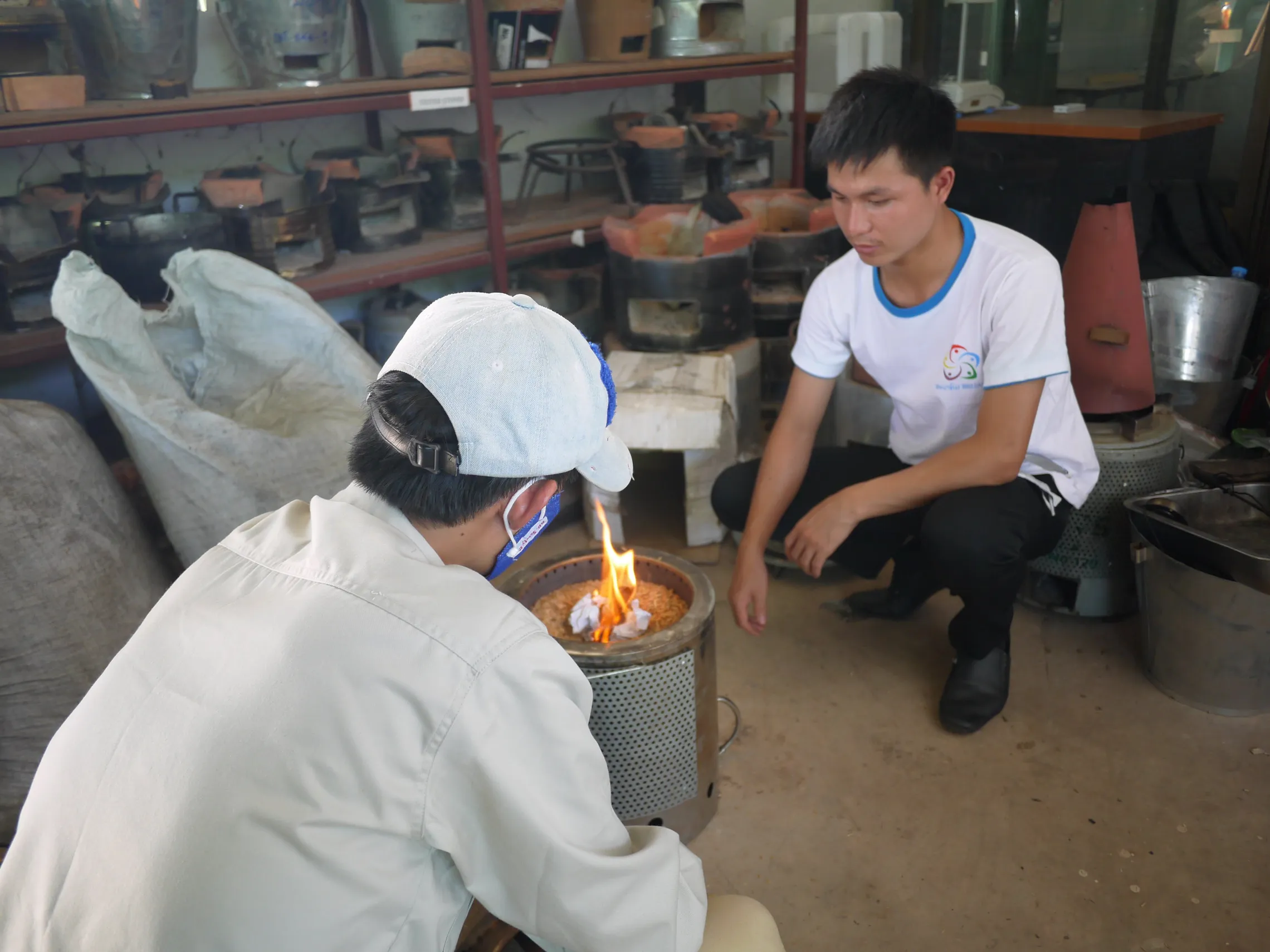Hands-On Sustainable Development: Part 2

Houmpheng Vilaiphone is currently a Year 4 student from the National University of Laos, studying in the Faculty of Environmental Science, Department of Technology and Environmental Science. He will graduate in August 2016, and is currently an intern with the Renewable Energy Team at SNV in Vientiane. Houmpheng is originally from Luang Prabang, but has been living and studying in the Lao capital, Vientiane, since 2007.
As part of his internship, he is writing a blog series to share his stories and experience with SNV Laos. This is the second post of his series.
In my last post, I talked about how I got interested in working with SNV and also my first few days as an intern with the Renewable Energy team. This blog post is about the trip I took to the research and development laboratory under the Ministry of Science and Technology to observe tests on cookstoves.
The production of efficient cookstoves is a continuing process; in order to increase the efficiency of clean stoves, they must be tested regularly and improved frequently.
On 11th July 2016, together with the SNV Vietnam team, I visited RENMI to observe tests of cookstoves from Vietnam. The cookstoves use rice husks and firewood as fuel. So far the results of the tests for some of the stove models have been positive, but some need more research and development. While all the cookstoves tested produced high heat, some emitted too much smoke and used too much fuel. Because of this, the Vietnam team will now continue working on cookstoves to address the issues raised and improve them together with the producers.

I have used traditional Lao cookstoves myself. And in the past, health was not a concern for many cookstove producers in Laos. We know now that smoke emitted during cooking could cause respiratory diseases and can also affect the environment. This is why the smoke emitted by the cookstoves is important for the team to focus on. Using clean stoves is not only more comfortable for the household, but it can also save cooking time and money used for buying firewood.
Apart from the research on clean cookstoves, I have been working with the design team. Making people realise and understand that the performance of the clean stoves also requires attention, what we call behavioural change. I took part in participatory design and advertising. I found that I needed time to come up with and improve advertising materials in order to clearly convey our meaning and purpose. In this way, advertisement-design is similar to research and development of cookstove models. It can be complicated and it can take time but in the end we produce things we can be proud of.